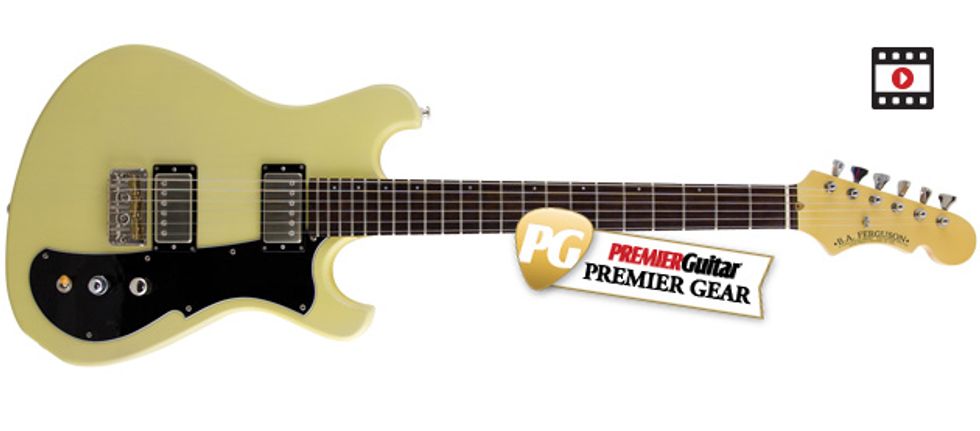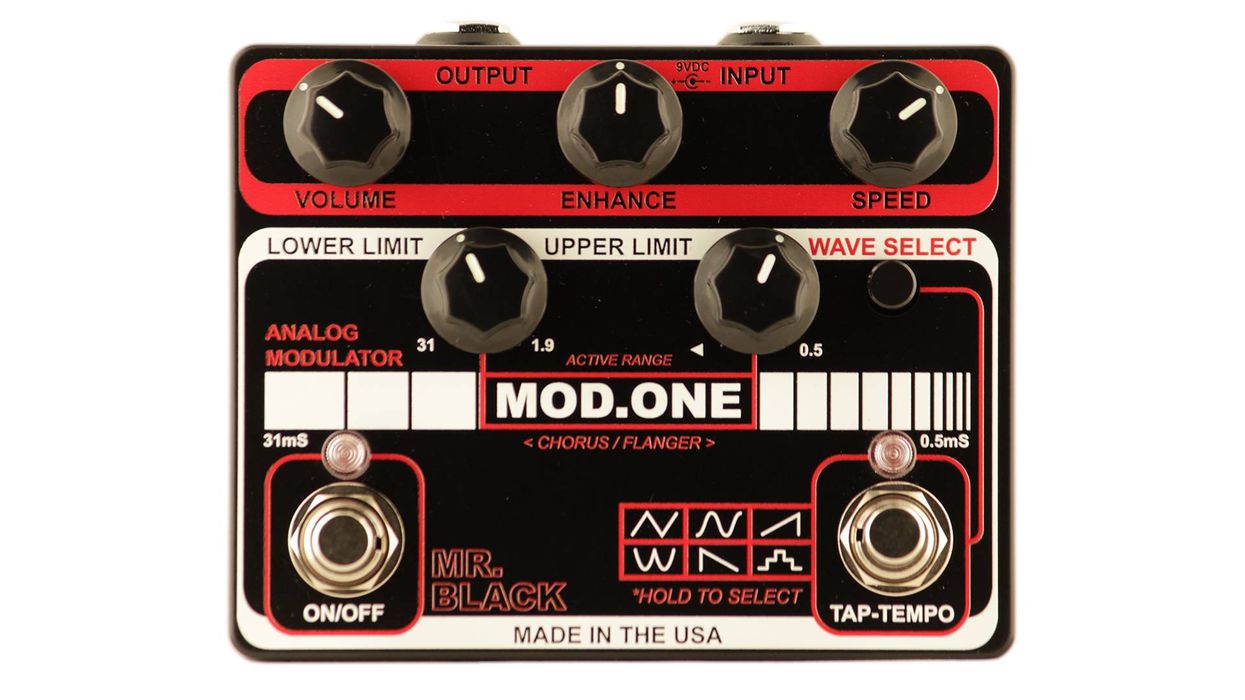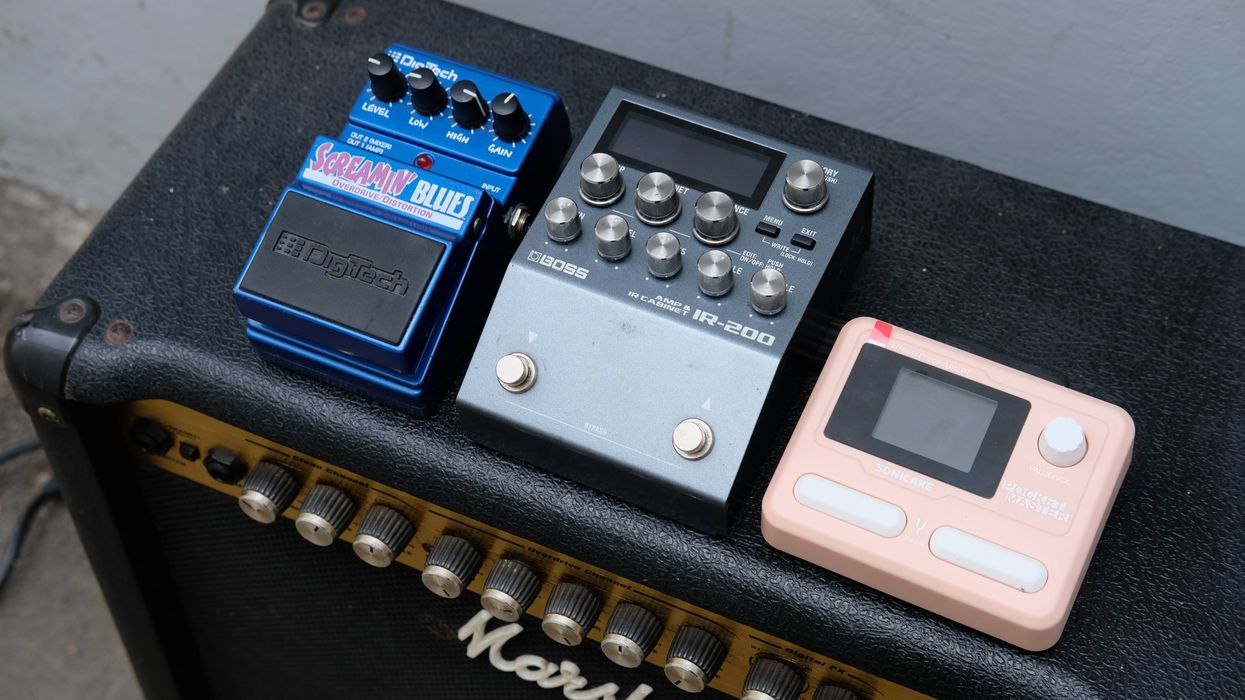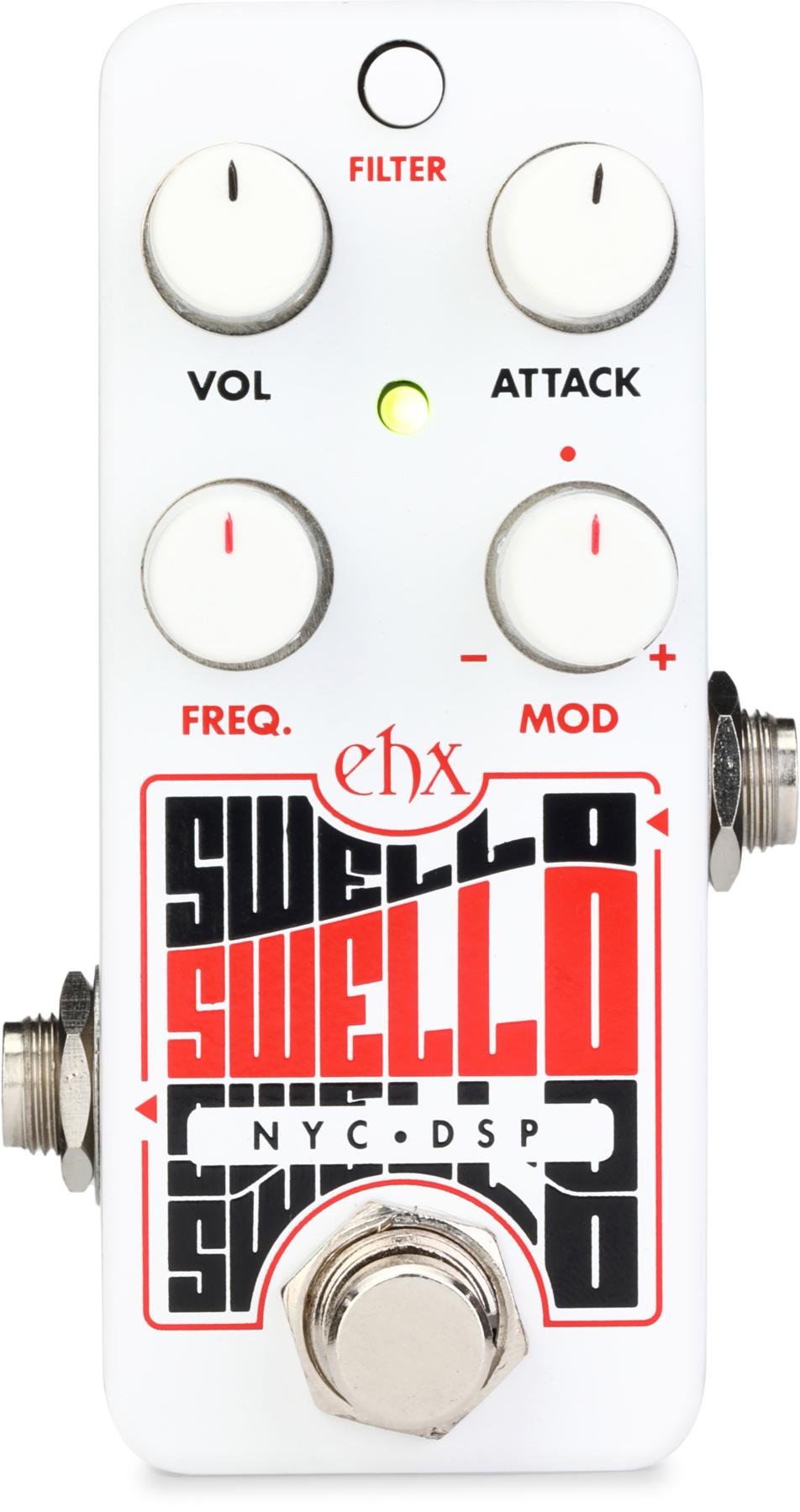Guitar builders have been trying to distill classic Fender and Gibson design virtues into a single guitar for decades. Even Fender and Gibson themselves undertook these exercises in competitive design synthesis—yielding instruments including the Firebird, Telecaster Deluxe, and Starcaster. South Carolina luthier B.A. Ferguson’s new Classic Class Shirley is a Gibson/Fender mash up that succeeds largely because it mates Ferguson’s own forward-looking and inspired design decisions with the best bits of Telecaster and Les Paul Junior construction to arrive at its sweet-sounding and smooth-playing sum.
Mellow Yellow Rises Again
Though the Shirley is pretty similar in size to a Telecaster, the guitar both looks and feels more compact. Chalk that up in part to a curvaceous, slim-waisted profile that cleverly fuses hints of Rickenbacker, Ibanez, Jaguar, and Les Paul Junior into an original, cohesive, and handsome whole. At about 7 pounds, the guitar feels light—which, along with the slim profile, makes for a comfortable instrument to sit with or sling over your shoulder. While Ferguson offers a few different color options including sunburst, cardinal red, and a turquoise shade called surfside blue, our review model came in a color B.A. Ferguson calls blonde. In reality, it’s neither the blonde you associate with a ’50s Telecaster nor the “T.V. Yellow” associated with a Les Paul Junior. Instead the thin, semi-opaque nitrocellulose finish has a hint of lime that suggests a ’60s muscle car influence. It won’t be everyone’s cup of tea, but I loved the way it highlighted the Shirley’s curves while leaving some of the alder body’s grain visible. (Color coordination obsessives will want to select a strap for a blonde Shirley carefully, by the way. Black and muted earth tones are a nice match. My fire engine red Ernie Ball nylon strap? Not so much.)
Quality construction is exactly the stuff you’d expect from a boutique builder at this price. The fretwork is flawless, and the four-bolt neck sits fast and secure in the asymmetrical neck pocket, which is shaped to accommodate the deep cutaway. The only construction irregularities I encountered are at the nut, which seems just a touch too substantial for the slot, and a few spots on the side of the body where the finish seemed thicker and more opaque. In the end, it was hard to classify either as a flaw. I liked how the irregularities in the finish accented the curves and grain, and the nut provides plenty of extra material if you decide you want deeper or wider slots for heavier strings.
Back to that hybrid of Gibson and Fender. The Shirley feels a lot like a Les Paul Junior—a guitar I love for its balance, compact dimensions, and substantial, ready-for-punk thrashing. The 12" fretboard radius and medium jumbo frets also lend a very Gibson-like, bend-happy feel—so much so that you tend not to notice the very Fender-like 25 1/2" scale. The six-on-a-side headstock is populated by Hipshot open-gear, 18:1 tuners. The half-cut Telecaster style bridge is top loading and home to three brass barrel saddles. A Telecaster influence is also apparent in the textured steel knobs. One considerable difference is the inclusion of a stacked passive tone control, which enables adjustment of bass and treble output. It’s a smart, efficient, and effective setup.
Long Scale, Expansive Sounds
In a few words, the Shirley sounds freaking great (and that’s coming from a player who prefers single-coils nine times out of 10). There’s a lot that goes into the Shirley’s often-spectacular sonic sum. But the foundation of the guitar’s voice seems squarely rooted in the marriage of the 25 1/2" scale and the lovely Porter humbuckers that can leverage and communicate long-scale resonance without sounding overpowering or overwhelmed.
Ratings
Pros:
Killer range of tones. Compact feel. Almost ideal synthesis of Fender and Gibson tone attributes at many settings.
Cons:
Essentially sound build can look and feel slightly rough around the edges.
Tones:
Playability:
Build/Design:
Value:
Street:
$1,499
B.A. Ferguson Classic Class Shirley
bafergusonguitars.com
It’s worth mentioning that Boot Ferguson assembled a guitar that sings and resonates beautifully before you even plug it in. Without any electricity or amplification, the Shirley still paints a colorful, full-spectrum sound picture and sustains like a little piano. Playing barre chords and moveable shapes up and down the length of the neck reveals a chiming authority and responsiveness, and speaks to the guitar’s immaculate setup. Plug the 6-string in, though, and this rich basic wood-and-wire sonority takes on an impressive wide-screen dimensionality.
The neck pickup has the brawn and beautiful, even temperament of a vintage-style PAF, which is killer for meaty but stinging Peter Green-style jabs. But the Shirley also does the very impressive trick of delivering a Telecaster’s searing bridge pickup tonality without sounding too bossy, too hot, or like a single-coil on steroids. That said, it’s a good thing the treble tone control is as effective as it is. The Shirley will wail in the high-end side of the spectrum with tone and volume wide open, and toppy amps and speakers will react very excitedly in those ranges.Jazzers may miss some of the PAF smokiness the Porter trades for extra clarity in the equally spectacular neck pickup. But it still sounds rich without being wooly, distributes plenty of top-end content above the substantial low-mid voice, and mellows out readily with attenuation from the treble and bass tone controls. It also sounds amazing with fuzz—even cholesterol-rich Big Muff tones take on an extra-oxygenated openness. The combination of the two pickups may be the best sound of the bunch—blending the even, low-fat/high-protein signal from the neck with the airy precision of the bridge. And if you weren’t already impressed with the range and versatility of the stacked tone controls, they really shine in a combined pickup setting, allowing tone sculpting precision and breadth you don’t always get from a two-humbucker instrument.
The Verdict
Boot Ferguson’s tone recipe for the Shirley is impressively complex and just flat-out delicious. The combination of bright alder tones, long-scale resonance, top-loader zing, and the range derived from the inspired Porter humbuckers and tone controls make this a solidbody of many voices. Any player looking for an ideal marriage of Gibson and Fender sounds and feel is bound to be intrigued—if not knocked out—by how seamlessly the Shirley can bring those worlds together. And while it remains a relatively substantial investment at around $1,500, the Shirley’s multi-faceted personality has a way of making it feel worth every penny.
Watch the Review Demo:




















